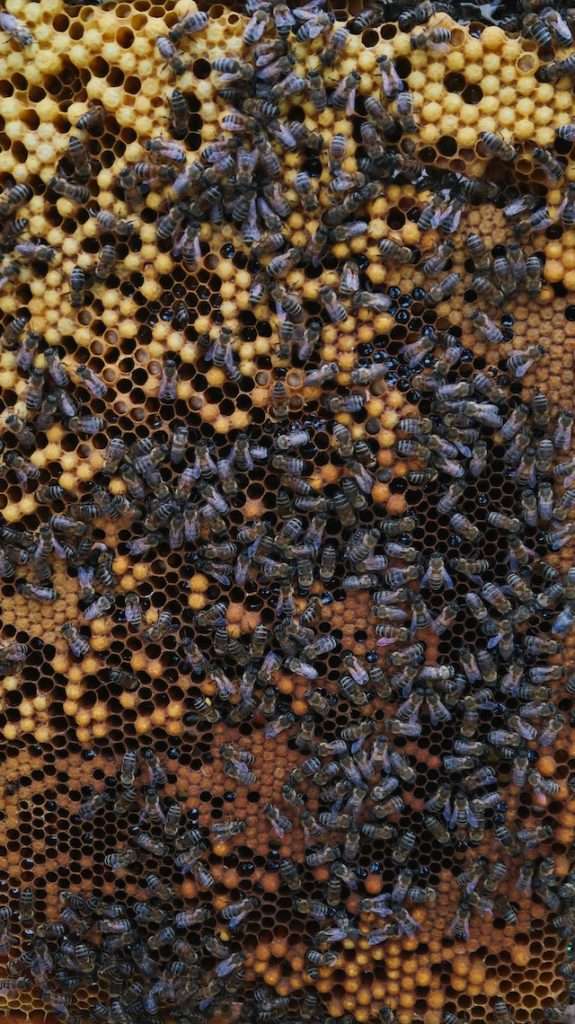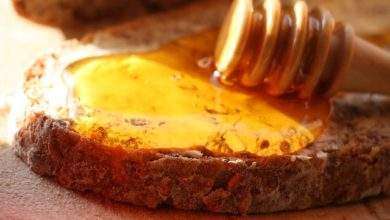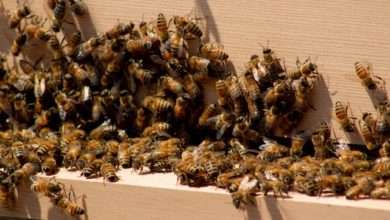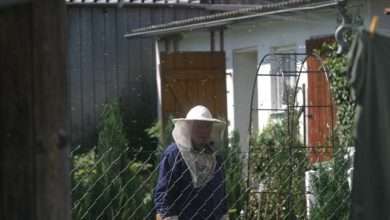What You Need to Know About Laying Worker Bees

If you’ve ever kept bees, you know they’re an amazing organism that can thrive in almost any environment. One of the remarkable characteristics of beehives is that they have a self-regulating system for laying eggs, which consists of certain worker bees, known as laying workers. These bees can lay eggs without the presence of a queen.
But, if your hive has laying workers, something is likely wrong. To figure out what that might be, and to avoid the problems they can bring, it pays to understand what laying workers are and why they occur.
Understanding Laying Workers
Laying workers are a common problem that many beekeepers face at some point in their journey. They are worker bees that have started to lay eggs, something that normally only the queen bee does. This situation can have detrimental effects on the health and productivity of the hive. In this chapter, we will discuss the definition, causes, and signs of laying workers.
- Definition of laying workers
Laying workers are worker bees that have not mated properly and have started to lay eggs. This usually happens when the queen bee dies, gets lost, or becomes unproductive. Without a queen to control the hive’s reproductive functions, some of the worker bees will start to lay eggs.
- Causes of laying workers
Laying workers are worker bees that, instead of foraging and bringing in nectar, lay eggs. When there is no queen in the hive, the number of potential queens increases and a certain number of worker bees may take the opportunity to produce a few eggs of their own.
This can happen when a colony loses its queen, or during periods of low nectar flow, when the workers don’t have enough food to keep them going. Without enough food, workers produce fewer viable eggs, resulting in the production of more worker eggs. It’s thought that this is an evolutionary strategy for the colony to survive in times of hardship.
- Signs of laying workers
One of the most significant signs of laying workers is the appearance of multiple eggs on one comb. Normally, a queen bee lays only one egg per cell, but laying workers often lay multiple eggs in the same cell.
Additionally, the brood pattern may be uneven, and some cells may contain only drone brood. The bees may also seem agitated and aggressive towards the beekeeper.
How Laying Workers Affect Your Hive
As beekeepers, we always strive to maintain healthy hives that are productive and efficient. However, laying workers can have a negative impact on the overall performance of your hive. In this chapter, we’ll discuss the various effects of laying workers and how to identify them.
Negative Effects

- Reduced Egg Production: When laying workers are present in a hive, they will often lay eggs in drone cells instead of worker cells. These eggs will produce drones instead of worker bees, which can lead to a significant reduction in egg production. This can also reduce the genetic diversity of the hive, as laying workers only mate with one drone.
- Increased Chance of Disease: Laying workers may not be able to detect when a cell is infected with a disease, which can lead to the spread of infections throughout the hive. This can be particularly problematic if the disease is highly contagious, as it can spread rapidly and infect a large number of bees.
- Decreased Overall Productivity: Laying workers are not as efficient as queen bees at laying eggs, which can result in a decrease in overall hive productivity. Workers may also start to consume more resources than they need to, which can put a strain on the hive’s ability to produce honey.
Positive Effects
- None: Unfortunately, there are no positive effects of laying workers in a hive. They can cause a lot of problems that can be difficult to resolve if not addressed quickly. If you suspect that your hive has laying workers, it’s important to take action as soon as possible to prevent any further damage.
Identifying Laying Workers
So, how can you tell if your hive has laying workers? Here are a few signs to look out for:
- Drone brood in worker cells
- Multiple eggs per cell
- Lack of eggs in queen cells
- A general decrease in egg production
If you notice any of these signs in your hive, there’s a good chance that you have laying workers. It’s important to act quickly to address the issue and prevent any further damage.
Prevention and Treatment of Laying Workers
The presence of laying workers in a beehive can be a serious issue for beekeepers. Laying workers are infertile female bees that lay eggs in the hive, resulting in the production of drones and worker bees that are unable to reproduce. This can lead to a decrease in honey production and eventually the loss of the hive.
To prevent and treat laying workers, there are several steps that beekeepers can take.
Prevention
Preventing laying workers from developing in a hive is the best way to avoid the issue altogether.
Here are some steps you can take to prevent laying workers:
- Ensure the presence of a queen: A queen bee is essential to maintain the reproductive health of a hive. Queen bees produce a pheromone that inhibits the development of laying workers. Therefore, make sure that your hive has a queen bee at all times.
- Regular inspections: Regular inspections of your hive will help you identify any issues before they become serious. During inspections, look for signs of queenlessness and laying workers. Early identification and intervention can prevent laying workers from developing.
- Combine weak colonies: Weak colonies are more prone to developing laying workers. If you have a weak colony, consider combining it with a stronger one. This will increase the pheromone production by the queen and discourage the development of laying workers.
Treatment
If you have already identified the presence of laying workers in your hive, there are several steps you can take to treat the issue:

- Requeening: One of the most effective ways to treat laying workers is to introduce a new queen bee. A new queen bee will produce pheromones that will inhibit the development of laying workers.
- Introducing a brood frame: Introducing a frame of brood from another colony can help stimulate egg-laying behavior in the queen. This will help strengthen the hive and discourage the laying workers.
- Shaking out the laying workers: Another option is to shake out the laying workers from the hive. This involves shaking the hive so that the laying workers fall out of the hive. This may be a harsh option, but it can be effective if other methods fail.
Final Thoughts on Laying Workers
Laying workers are a natural occurrence in a hive when a queen dies, is lost, or is otherwise unable to lay eggs. While worker bees are not physiologically suited to lay fertilized eggs, they can lay unfertilized eggs, which will develop into drones. The presence of laying workers can cause a number of problems in a hive, including:
- Unproductive laying of drone eggs
- Reduced brood production
- Aggression towards new queens
- Weakening of the hive as a whole
It is important to note that while laying workers can be a problem, they are not always a death sentence for a hive. If caught early, laying workers can be managed with the introduction of a new queen or by giving the hive a brood break. However, if left unchecked, laying workers can lead to the collapse of a hive.
Importance of Taking Action Against Laying Workers
Action must be taken against laying workers to protect the health and productivity of a hive. The reasons for this are clear:
- Preventing the spread of poor genetics: When laying workers lay drone eggs, these drones will be unfertilized, resulting in offspring with poor genetic characteristics. By introducing a new queen, the hive can return to producing genetically strong worker bees.
- Increasing brood production: Laying workers are unlikely to lay fertilized eggs, which are needed to produce new worker bees. Without a queen present, the hive will not reach its full potential in terms of brood production.
- Strengthening the hive: Laying workers can lead to a weakened hive, making it more susceptible to diseases and pests. By addressing the laying worker problem, beekeepers can ensure the vitality of their hives.
In conclusion, laying workers can pose a serious threat to the health and productivity of a hive.
However, by taking action early and introducing a new queen or implementing a brood break, beekeepers can save their hives from potential collapse. The importance of taking action against laying workers cannot be overstated, as it can mean the difference between a healthy, productive hive and a hive in decline.
FAQ
What are laying worker bees and how do they differ from a queen bee?
- Laying worker bees are infertile female bees who lay unfertilized eggs. They differ from a queen bee as the queen is the only fertile female in the colony who can lay both fertilized and unfertilized eggs.
What are the signs that a colony has laying worker bees?
- A colony with laying worker bees will have multiple eggs in each cell and the eggs will be clinging to the side of the cells instead of being centered in them. Additionally, the bees will not be organized in their work and there will not be any new brood.
What are the causes of a colony to develop laying worker bees?
- A colony can develop laying workers if they have lost their queen, if the queen is not producing enough pheromones to suppress ovaries of other females, or if there are no worker bees present in the colony.
How can laying worker bees negatively impact a hive?

- Laying worker bees can negatively impact a hive as they lay unfertilized eggs which don’t result in viable brood. This shortens the lifespan of the colony as they don’t have new bees being born to replace the older ones.
How can one break the cycle of laying worker bees in a hive?
- One way to break the cycle of laying worker bees is to introduce a new queen bee into the hive. The scent and pheromones of the queen will suppress the egg-laying behavior of the laying workers.
Can laying worker bees be used to produce honey?
- Laying worker bees do not produce honey. They only lay unfertilized eggs which do not develop into brood.
How long does it take before laying worker bees produce offspring?
- Laying worker bees can start to produce unfertilized eggs within a week after the queen bee is gone. However, it takes about 20 days for the eggs to develop into forager bees.
Are laying worker bees more aggressive than regular bees?
- No, laying worker bees aren’t more aggressive than regular bees. However, since there are more laying workers than usual, there may be more bees competing for the same nectar sources.
Can laying worker bees reproduce?
- No, laying worker bees are infertile and cannot produce fertilized eggs. Only the queen bee can produce both fertilized and unfertilized eggs.




